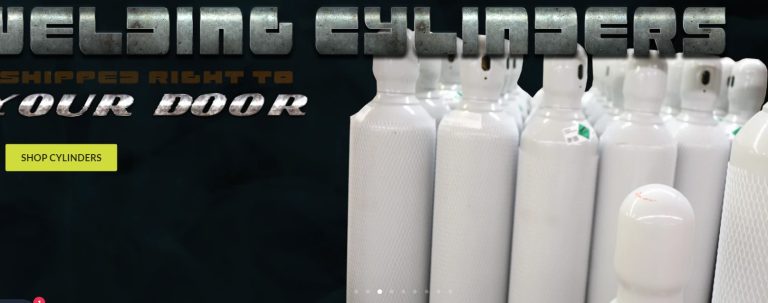Welding gas cylinders play a crucial role in achieving strong and reliable welds. Welding gases such as argon, carbon dioxide, and helium shield the weld pool from atmospheric gases and provide the necessary heat for the welding process. This blog post will explore the science behind welding gas cylinders and how they help you achieve stronger welds.
Welding Gas Cylinder Construction
Welding gas cylinders are typically made of high-strength steel or aluminum alloy. The cylinder is designed to withstand high pressure and safely contain the welding gas. The cylinder also has a valve that controls the gas flow and regulates the pressure inside the cylinder.
Types of Welding Gases
The type of welding gas used depends on the welding process and the material being welded. Argon is commonly used for TIG welding and is ideal for welding non-ferrous metals such as aluminum and titanium. Carbon dioxide is used for MIG welding and is suitable for welding ferrous metals such as steel. Helium is used for TIG welding and is often combined with argon to improve penetration and weld quality.
Gas Shielding
Welding gas cylinders provide the necessary gases for shielding the weld pool. The gas creates a barrier between the weld pool and atmospheric gases, such as oxygen and nitrogen, which can cause impurities. This shielding gas also helps to stabilize the arc and improve weld quality.
Heat Generation
Welding gases also provide the necessary heat for the welding process. In TIG welding, the heat is generated by the arc between the tungsten electrode and the workpiece. In MIG welding, the heat is generated by the arc between the wire electrode and the workpiece. The welding gas helps to stabilize the arc and regulate the temperature of the weld pool, resulting in stronger and more reliable welds.
Gas Purity
The purity of the welding gas is critical to achieving robust and reliable welds. Impurities in the gas can cause defects in the weld, such as porosity and cracking. Welding gas cylinders are designed to deliver high-purity gases free from impurities. It ensures that the welds are of the highest quality and meet industry standards.
Gas Flow and Pressure
The flow and pressure of the welding gas are also essential factors in achieving solid welds. Too much gas can cause turbulence and affect the stability of the arc, while too little gas can result in insufficient shielding and poor weld quality. Welding gas cylinders are designed to deliver a consistent gas flow at the right pressure to ensure that the welds are of the highest quality.
Cylinder Maintenance
Proper maintenance of welding gas cylinders ensures their safety and reliability. Cylinders should be inspected regularly for leaks, dents, and other damage that could compromise their integrity. Cylinders should also be stored properly and transported safely to prevent damage.
Conclusion
Welding gas cylinders play a critical role in achieving strong and reliable welds. Understanding the science behind welding gas cylinders can help welders select the right gas for the welding process, ensure the quality of the welds, and maintain the safety of the welding setup. The science behind welding gas cylinders involves gas shielding, heat generation, gas purity, gas flow and pressure, and cylinder maintenance.







